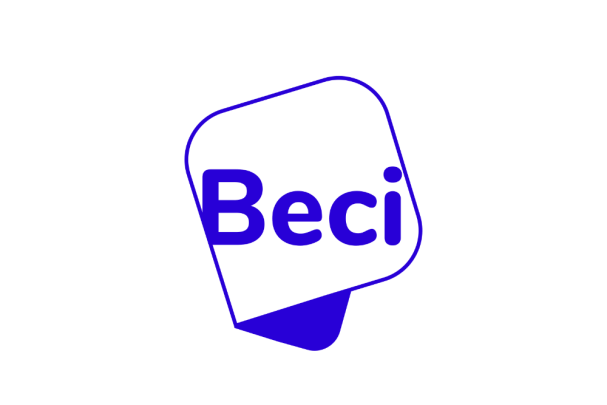The use of influencer marketing has exploded over the past years and become a “standard” tool. What’s behind the concept? It consists in putting an “influencer’s” community to work for your company, like traditional media. How do you do this in practice? What are the pitfalls and benefits of this marketing technique? How much does it cost?
Using the “persuasive fire power” of an influencer is commonplace today. It has become an inevitable advertising approach and just another medium in company marketing plans. So much so that the market is growing year-on-year: it increased five-fold between 2016 and 2020 according to the annual report of the Danish Influencer Marketing Hub website. And the trend doesn’t seem to be slowing...
Influencer marketing use is growing, because, among other things, it appeals both to major brands and small retailers. Each at their own level, but often with a good return on investment. A restaurant takes advantage of the digital name recognition of a food blogger; a young sportswear brand takes advantage of a coach’s network; a local car dealership partners with a regional “personality” to get its brand known among its target audience. These examples can all be found on the Internet.
Thanks to the growth of social media there is a multitude of opinion leaders at every level and in every field. Influencer marketing is no longer the prerogative of major stars: marketing messages are increasingly promoted by nano- and micro-influencers who are very close to their communities. As a response to the growing rejection of traditional advertising methods, influencer marketing echoes “new” consumer expectations: greater proximity, personalisation, customer focus, and interaction.
What is influencer marketing?
It’s easy to find a number of different definitions of influencer marketing, but they all converge on one place: the concept of “influence”. That’s exactly what it is: a marketing technique intended to impact the buying decisions and thinking of consumers using the persuasion abilities of an opinion leader (“influencer”).
In practice? It’s a win-win collaboration for all parties: your company has a product or service to promote; the influencer is listened to by a community which is willing to follow them; the consumer identifies with their “model”. In exchange for a consideration (financial, material, etc.) the influencer praises your product - via multi-faceted content (photos, tests, video, etc.) - in order to convince their followers and help you to meet your goal: to sell a product or service, increase or improve your brand recognition, generate more traffic on your digital platforms, etc.
We stress that this isn't covert manipulation (despite certain abuses), but rather a digital recommendation process. It's “advice” from a person whose profile and name recognition gain a group’s trust. In other words, it’s the equivalent of virtual word of mouth and based on similar values: trust, attachment and loyalty (vis-à-vis the “leader”). It's clear that the success of this type of operation requires well-targeted choices, notably for the following parameters:
- Your objective and the strategy to achieve it must be clearly defined;
- Your identity and values must match the influencer’s;
- The influencer’s audience (numbers and qualities) must match your commercial target;
- The content must be relevant (both in terms of content and form).
The benefits of influencer marketing
The reason for this medium’s success? Its effectiveness. A number of studies confirm it. 80% of marketing professionals agree; 71% of people surveyed affirm that results are better; 89% of them believe that their return on investment is greater than with other channels. What’s behind the figures? Why is working with an influencer so appealing?
1. Accuracy
When you work with an influencer, you are “taking advantage” of their community. The group consists of loyal fans who share clearly identified interests. When Hello Fresh partners with @nicefamily, for example, it’s to reach a young, family-oriented audience. An interior decoration store may try to appeal to the Instagram followers of @idoitmyself.be. That's the benefit: to access an active, and often very engaged, niche.
2. The opening
The social media universe is a wide-open window on Belgium and the world, both in terms of users and of topics. Instagram alone has nearly four million users in Belgium, i.e., 30% of the country’s population. Together with Facebook, LinkedIn, TikTok and others, 65% of Belgians are active on social media. This “wealth” of users provides an opportunity to vary and multiply partnerships based on your goals and products. Fine tuning!
3. Credibility
Traditional advertising, often considered to be intrusive, is ageing. This is the opposite of influencers who entertain a close relationship with their followers - particularly nano- and micro-influencers, whom we’ll talk about more later. More personal and authentic contact, proximity and trust, reflecting involvement and engagement. Both within the community and for the partner brands.
4. Accessibility
Most marketing professionals highlight another asset: return on investment (ROI). In other words? You’ll usually get your money’s worth since you’re not obliged to call on international stars - on the contrary - to obtain convincing results. You can even meet your goals with a small budget by taking advantage of the flexibility and opportunities available to fine-tune influencer marketing.
How to start working with an influencer
1. Define your expectations
The opportunities to partner with influencers are infinite. Which is why it’s crucial to put a clear communication plan in place. Know exactly where you want to go! Here are the important items you’ll have to work on:
- Your strategy : working with an influencer is often part of a broader marketing approach in which other tools complete your arsenal. The idea is to successfully implement the different techniques, which range from Google Adwords to emails, to reach your goals.
- Your goals: increase traffic on your e-shop; stimulate sales of a product or service in particular; acquire new customers; increase your visibility and name recognition in a community; increase the loyalty of your current customers; etc. Regardless of your objective, it’s essential that you identify it to be able to assess the success of the campaign at a later time.
- Your budget: the key to success often remains the same. As with other tools, influencer marketing enables you to advance gradually and experiment without spending a fortune. Start “small” and adjust your budget as you go along.
2. select a method
You can approach your campaign in different ways:
- The “house” approach: it’s “free” since you’ll take care of all of the steps yourself. From choosing the influencer to assessing the results and including content creation and the use of digital tools. This is an interesting solution to “keep control”, but it’s time-consuming since you won’t necessarily have all of the skills required. You will often have to use digital tools, including matching platforms (Hivency, Reech, Linkfluence, Traackr, etc.) to identify the right influencer for you.
- Influencer marketing agencies: a more expensive, but more complete solution, since you will be able get A to Z support. To identify the best influencers for your brand, define the partnership contract, plan and create the campaign, determine the best suited social medium, analyse report data, etc. The success of influencer marketing has naturally led to an explosion in specialised agencies. They include BeInfluence, a Belgian start-up founded in 2017, which has focused on nano- and micro-influencers in France and Belgium.
3. Identify the right influencer
Finding the right person is one of the keys to the success of your campaign! In the past, only major stars had the power to influence people. Social media have opened the door to other opinion leaders of all “sizes” and profiles. Even better: some studies have shown that their “fire power” is much greater than that of international stars. Which is great because you probably don’t have the resources required to work with Rhianna or Cristiano Ronaldo. Influencers generally break down as follows (although there is no consensus):
- Nano-influencers: have fewer than 5,000 followers, but are not without value. On the contrary, they will be looking to “grow” their audience and will be very active;
- Micro-influencers: under 50,000 followers. They are often known in a specific field both for their expertise and the tight bonds with their community;
- Macro-influencers: have up to 500,000 followers. They are already expert influencers, virtually professionals. Their posts are meticulous and regular to strengthen their relationship with their large audience:
-
Mega-influencers: go beyond social media with hundreds of thousands of fans: they are real stars. All posted content has a major impact, but its effectiveness for the partner brand may suffer from the “distance” from its audience.
Choosing the right influencer for your campaign. Size doesn’t matter! Forget about the number of followers, because quality is often much more important than quantity, as demonstrated by a Markerly study conducted with 800,000 Instagram users and five million posts. The result? A post for an audience of fewer than 1,000 received an 8% like rate compared to 1.6% for accounts with over 10 million followers. Engagement is stronger! What questions should you ask to identify your special influencer?
-
The influencer: do they have the same values as your company? Are they controversial (and on what topics)? How well-known are they on the Internet (currently, in the past)? What other brands do they work with? Are they active enough? How often do they post? How large is their audience? Etc.
-
The community: which subjects bring members together: photography, cooking, travel, family, fashion, sports, lifestyles, humour, etc.? What is the general profile of the followers: geographical area, age, gender, etc.? What is the relationship between the influencer and their audience? Is it really engaged and loyal? Is it responsive to the posts? Does the influencer interact on regular basis with their followers (comments, surveys, Q&A, other?). Etc. Etc.
4. Managing the relationship
Once you’ve identified your “partner”, you will have to set a number of parameters. This is a step you can't skip, at the risk of seeing the collaboration fall through.
- Duration: the issue is often one of knowing if you're planning a one-shot operation or a long-term campaign. Each option has its benefits and drawbacks, but brands are increasingly opting for a long-term relationship in order to stabilise the relationship, set out markers and further ensure the loyalty of the influencer's audience.
-
The editorial line: this is a vast topic! It involves the entire creative side of your marketing approach: the media (video, photo, etc.), the content and visuals of the post, the message (content and form), etc. If you want to work with an influencer, it means that you agree with their universe and that you have confidence in their talent as a communicator. However, you can still discuss guidelines together to ensure that you are on the same wavelength. The better you understand each other, the better the operation.
This holds true for the choice of social media also. Although Tik Tok has been successful, Instagram continues to be the preferred playing field of influencers, far ahead of Twitter, Pinterest, LinkedIn or even Facebook, which is losing ground. YouTube stands apart because it uses its own “actors” (sometimes the same ones): YouTubers. The issue of the communication medium is, once again, inseparable from the influencer's profile...
-
The “consideration”: even though financial compensation (fixed or variable) is de rigueur, there are other forms of compensation: a gift card, a test sample, sponsoring of an action, an invitation to take part in an event, a commission based on results, etc.
- Communication: this is a key element that has to be maintained with the same care as your other partnerships. Note that the influencer is involved in an “honest” relationship with their community: they share what they “like”. The healthier and more transparent your relationship, the more reasons they will have to be engaged and the better the results.
- The contract: it’s important to write a contract for the relationship (especially for the long term) to avoid any potential problems. For example, you can include the frequency and conditions of posts, your right of access, the issue of rights, etc. The assistance of a professional can be important.
5. Assessing the results
You’re happy with the influencer’s post, but it also has to have an impact. The success of the campaign will clearly depend on the objectives set, on condition that the relevant indicators can be analysed. Which ones?
- Visibility: several KPIs can help you gauge the visibility of your campaign: the number of times the post is viewed, the size of the community, the scope or potential number of persons reached; etc.
-
Engagement: this is the Holy Grail. This is probably one of the most important parameters because it measures the “value” of the content. It is defined by the real interactions of followers: the number of clicks, comments, shares, likes, mentions, hashtags, etc. This is the key piece of information to know if you are on the right track or not.
For example, in Belgium, “sports” influencers provide the greatest engagement (5.31% on average). Remember also that studies tend to demonstrate that the size of the community has a negative impact on engagement. One more reason not to focus on the number of followers too much.
-
Commercial performance: in the end, this is the raison d’être of your campaign. This is why it's crucial to use the data on traffic generated, leads (potential customers), the conversion rate (people who have become customers) and, (especially) the impact on sales and the yield of your campaign.
How do you do this in practice? One of the difficulties resides in the fact that most of the information is tied to your influencer’s accounts. You will have to reach an agreement on this point. Another option: the campaign can be built around a promotional code they share with you. This will enable you to easily identify the customers of your e-shop that use it. Use the same approach for the links included in Instagram stories which enable you to track users. These are just two approaches among others.
Does this sound too mysterious? If you aren't comfortable with reports, you can also turn to a specialised platform (Reech, etc.) for help.
How much does an influencer cost?
That’s the million-dollar question... for which there is no ready-made answer because many different factors can have an impact on prices.
- The social medium;
- The size of the community;
- The name recognition and “power” of persuasion of the influencer;
- The extent and conditions of the mission (does the influencer have to create content or just share it; frequency; duration, etc.);
- The topic, type of product and visibility of your brand also play a part.
Do you need something more concrete? For information, here are the prices found by the Influence4you.com website for nano- and micro-influencers active in France:
- An Instagram post created by an influencer with 50,000 followers costs between €250 and €750 and a story viewed 10,000 times varies between €400 and €800;
- It's between €200 and €500 for Facebook, and between €180 and €400 for Twitter;
- A video viewed 10,000 times on YouTube can cost as much as €1,000.
The other side of the coin?
Influencer marketing also has some drawbacks, especially when the campaign isn’t well managed. Not surprisingly, since you’re entrusting the image of your company to a third party... This is a potentially dangerous “partnership” for you.
- A “bad”, destabilising influencer
This can cost you time and money. If the promotion of your new line of organic cotton sweatshirts is led by a fashion influencer, you must make sure that they are aligned with your values. Otherwise, you could upset their community as well as your own customers. Worse still, the account can go off the rails and jump all over the place from post to post. Be careful. Be careful.
- Beware of negative buzz
Even major brands aren't safe from bad advertising, which can sometimes have damaging consequences for their reputation. One recent example: Lacoste and Galler ended their collaboration with the rapper Roméo Elvis because they didn’t approve of his “behaviour”. This proves that you must choose carefully because a “like” or uncalled for statement can have a negative impact on your brand and sometimes involve financial penalties.
- Beware of fraud
Another recurring problem since influencer marketing took off: “fake” accounts with paid followers who are not engaged at all! This is why you have to ensure the “reality” of your partner’s community in advance, requesting statistics if need be. A Brussels-based influencer with 80% of their audience in China is suspect to say the least.This is also a problem for consumers given that nearly half of all influencers are allegedly at fault, deliberately or not, for not clearly indicating on their posts that they have a remunerated partnership with a brand.
As is already the case in other countries, the Association of Communication Companies (ACC) has published an influencer charter for all players to fight against questionable practices. Be sure to take all necessary steps to start your collaboration out on a firm footing.
Who can help me ?




